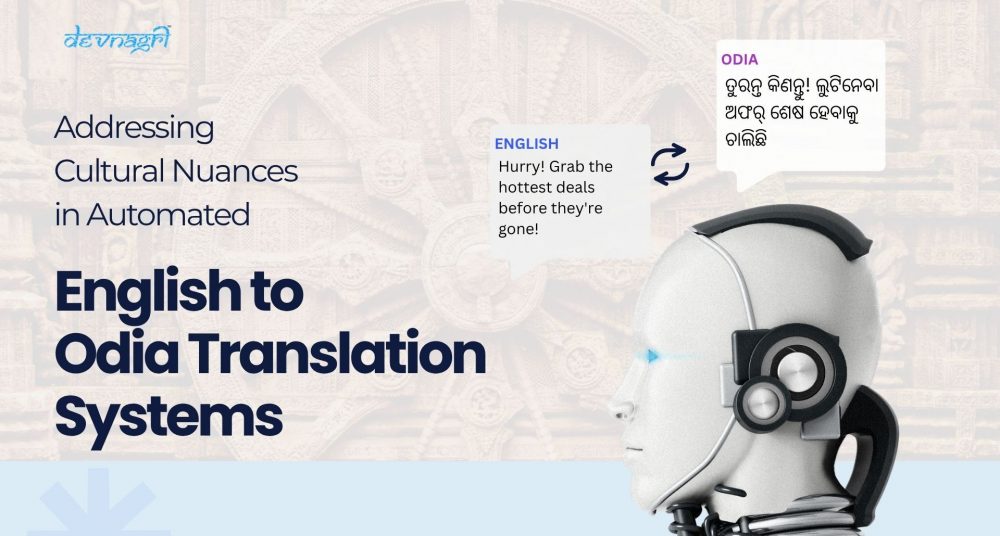If you sit with frontline teams in any bank or insurance office for a day, you’ll notice something that rarely shows up in dashboards or reports. Customers hesitate, not because the product doesn’t fit, but because they don’t fully grasp what’s being said. They listen, they nod, they sign where they’re told, but there’s often a cloud of confusion sitting quietly between them and the paperwork. Especially in states like Odisha, where people manage money confidently in daily life but feel disconnected the moment everything switches to English.
This is where the whole conversation about language in BFSI actually starts. Not in boardrooms, not in regulatory circulars, but in these very small moments. And honestly, we don’t talk about this enough. Something as basic as English to Odia translation might sound like a logistical task, but in reality, it influences trust more deeply than most institutions realise.
The Reality on the Ground
Odisha is changing fast. Digital payments in small towns. Insurance agents educate families about health plans. SHG groups opening accounts in batches. But one thing hasn’t changed: people want to understand financial information properly. They want to know what they’re signing up for. They want clarity before commitment. And when the language feels distant, everything else, no matter how advanced, starts to feel uncomfortable.
I’ve heard customers ask branch officers things like:
- “Eha mane kana?” (What does this mean?)
- “Mote simple re kahantu.” (Tell me simply.)
- “Eha risk achhi ki?” (Is there a risk?)
These aren’t unusual questions. They’re signs that the current communication format still doesn’t match the customer’s comfort zone.
Why Language Affects Compliance More Than We Think?
Regulators remind BFSI institutions to maintain transparency, but transparency means nothing if customers can’t understand the content. A customer signing an insurance policy in English without knowing the exclusions in Odia isn’t truly protected. The risk falls on both sides.
When information is translated well, a lot of small problems begin to disappear:
- Fewer complaints because expectations are clearer.
- Better understanding of terms and conditions.
- Less frustration during claims, repayments, or renewals.
- Staff don’t have to explain the same things repeatedly.
It sounds almost too simple, but clarity is the strongest compliance tool.
Odisha’s Market Needs More Than Literal Translation
Literal translations don’t always work in finance. You can’t translate “grace period” or “cashless settlement” word-for-word and expect everyone to understand. People relate more to explanation than terminology.
This is where a thoughtful English to Odia translation approach makes a difference. It’s not just swapping words, it’s making the idea digestible. When a financial document sounds like something a customer might actually say or hear in Odia at home, comprehension rises instantly.
And when people understand, they trust. It’s that simple.
What Actually Changes When Language Becomes Accessible
Let’s look at everyday financial journeys. The ones that rarely make headlines but impact millions.
- App interfaces: Many Odia-speaking users avoid certain features because the English instructions feel too formal or technical. They prefer to “ask someone at the branch” even when the app could’ve handled it.
- Loan explanations: Repayment schedules, charges, delays, customers feel more confident when these appear in Odia.
- Insurance claims: A properly translated step-by-step guide reduces panic during emergencies.
- Customer support: Voice, chat, SMS, Odia responses make people feel the institution is “theirs.”
If we look closely, language is the bridge in every journey.
AI Helps, But Human Understanding Makes It Work
Most BFSI companies now use AI-driven translation to speed things up. It helps, especially when you have thousands of pages and app screens. But Odia as a language has cultural nuances, and financial terminology needs contextual clarity.
So the best results come from a mix:
- AI for scale
- Human oversight for accuracy
- Customer feedback for natural phrasing
When this trio works together, the final communication feels natural, not mechanical.
Moving Towards a More Inclusive BFSI System
The more I observe the sector, the more obvious it becomes that language is not a “value-add.” It’s a foundation. A customer who genuinely understands a product becomes a loyal user. Someone who struggles through translation feels unsure, even if they never say it out loud.
Final Words
A lot of people in Odisha are getting comfortable with digital tools now, which is great for banks and financial companies. But all that growth doesn’t mean much if customers still feel unsure about what they’re signing up for. Confidence matters more than numbers, and people feel confident only when they actually understand what’s being told to them.
That’s why using Odia, properly, not just word-for-word, makes such a difference. When something written in English is explained clearly in Odia, people instantly feel more at ease. They’re less likely to make mistakes. They don’t keep second-guessing themselves. And it becomes easier for them to trust the company they’re dealing with. Honestly, in a field where trust is everything, language is probably the simplest tool BFSI companies have ignored for far too long.
And really, this whole thing isn’t only about rules, tech, or compliance checklists. It’s about making financial services feel like they’re meant for real people. If customers can read something in their own language and understand it without stress, half the job is done.



